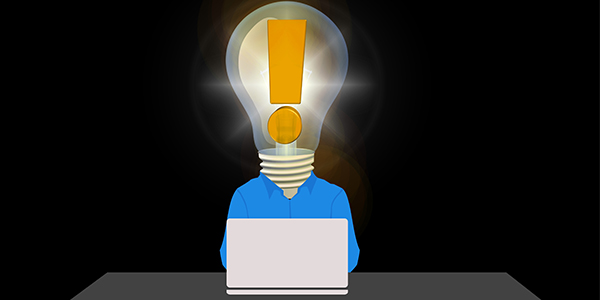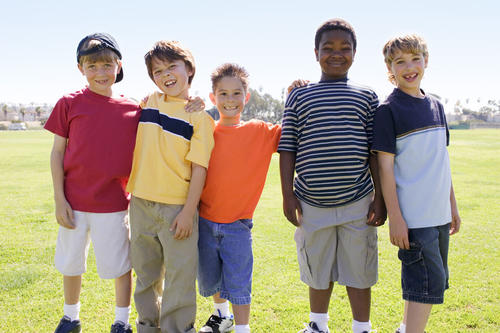









发布日期:2020-10-28
制定者:
出处:
 立即收藏
立即收藏
The treatment of TS is complicated by the range of symptoms associated with this condition and the variability across individual symptom profiles. In relation to efficacy, studies clearly indicate that no pharmacological agent has yet been identified that will reliably ameliorate tics in all sufferers. Judgments of treatment efficacy are further complicated by the waxing and waning nature of tics. A trial and error approach is likely to be necessary in order to identify the most appropriate combinations of treatments for patients with a more complex array of symptoms, such as those exhibiting features of OCD or ADHD. In such complex cases, there are clear safety issues pertaining to drug interactions and contraindications, in addition to concerns related to the use of medication in children.
The majority of treatment options for tics are pharmacological. The most commonly prescribed drugs are primarily dopamine antagonists, such as neuroleptics (e.g. haloperidol), benzamides (e.g. sulpiride) or atypical antipsychotics (e.g. risperidone). Other agents that may be efficacious include drugs which modulate noradrenaline (e.g. clonidine), GABA (e.g. benzodiazepines) and acetylcholine (e.g. nicotine). Nonpharmacological interventions include behavioural approaches such as habit reversal training and exposure response prevention therapy. Surgical techniques involving deep brain stimulation (DBS) of the thalamus or globus pallidus may also be considered for severe, treatment refractory patients. Some of the more recent treatments that have been trialled include electroconvulsive therapy and repetitive transcranial magnetic stimulation.

This review focuses primarily on the efficacy and safety of interventions designed to treat tics, although for some patients other behavioural symptoms may lead to considerable distress or functional impairment [Cavanna et al. 2008]. We identified relevant studies by searching Web of Knowledge and Health Information Resources (including CINAHL, EMBASE, MEDLINE, Health Business Elite and PSYCInfo) using the key terms ‘Tourette’, ‘tics’, ‘therapy’ and ‘treatment’, and focusing on the literature spanning the last decade (2000–2009). Other relevant articles were initially identified through consultation of the reference list of earlier reviews discussing similar subject matter [Bloch, 2008; Himle et al. 2006; Scahill et al. 2006; Robertson and Stern, 2000].
The majority of studies reviewed involve a wide array of pharmacological investigations. However, we also address the potential merits of behavioural and surgical options and highlight some more recent interventions. Thirty years of research have established a number of pharmacological agents as promising first-line treatments for TS despite methodological limitations. New, well-controlled studies are crucial in order to determine the most appropriate interventions for patients exhibiting specific constellations of behavioural symptoms.
Invasive techniques
Botulinum toxin injections

Botulinum toxin (botox) inhibits localized release of acetylcholine leading to reduced muscle activity. When used to treat tics, it is administered directly into the muscle group involved in the motor tic, or into the laryngeal muscles for vocal tics. Although some studies report a lack of efficacy [Chappell et al. 1997], many studies have noted improvement with the use of this treatment [e.g. Trimble et al. 1998]. These include cases involving patients with self-injurious symptoms [Aguirregomozacorta et al. 2008; Robertson et al. 1989]. Marras and colleagues reported that treatment with botox was associated with a 40% improvement in comparison with placebo [Marras et al. 2001].
In relation to vocal tics, botox has been shown to help coprolalia and accompanying premonitory sensations [Scott et al. 1996]. The efficacy of botox for phonic tics was also illustrated by a prospective, nonrandomized study carried out by Porta and colleagues which investigated the effectiveness of vocal cord injections of botox for phonic tics [Porta et al. 2008b]. Seventy patients (29 aged 10–16, 41 aged 19–55) were assessed 15 days after treatment and then a further four times over the next year following the injection of botox into the vocal cords. Assessment using the CGI indicated that phonic tics improved in 94% of patients, and that 41% appeared to be tic-free. Moreover, premonitory sensations were reduced and patients’ QoL improved. There were no serious side effects, although 84% of patients reported hypophonia.

Deep brain stimulation
Candidates for surgical treatment include patients exhibiting life-threatening self-injurious symptoms or severe tics that lead to significant functional impairment. Patients who fail to respond to many other forms of intervention may also be considered. The most common invasive technique for tics is DBS of the thalamus or globus pallidus. Activation of the implanted electrode leads to a localized paradoxical decrease in neural activity in the site of implantation. Although this form of treatment is still in its infancy, studies have provided encouraging evidence for the effectiveness of this technique in ameliorating tics.
Many studies have investigated the effectiveness of DBS of the medial thalamus for tics. Visser-Vanderwalle and colleagues reported the results of DBS of the medial thalamus in three patients with TS [Visser-Vanderwalle et al. 2003]. Treatment led to tic reductions of 90%, 72% and 83%. Another study of five patients [Maciunas et al. 2007] showed that DBS of the medial thalamus region led to a 40% decrease in motor tics and a 21% decrease in vocal tics. In a larger sample of 18 patients, Servello and colleagues reported evidence of good tic reduction at 3–17 months post treatment, although on a few occasions, surgery led to complications [Servello et al. 2008].

DBS of the globus pallidus has also been shown to improve tics. Shahed and colleagues reported an 84% reduction in tics following treatment, and no side effects [Shahed et al. 2007]. Houeto and colleagues compared DBS of the globus pallidus interna (GPi) and centromedial parafascicular nucleus of the thalamus [Houeto et al. 2005]. Tics improved by 70% after either treatment and reductions in coprolalia and self-injurious behaviour were also noted. The centromedian parafascicular nucleus of the thalamus and ventromedial GPi were targeted in three patients who participated in a controlled, double-blind, randomized, crossover study [Welter et al. 2008]. DBS of the GPi resulted in a dramatic improvement in tics according to YGTSS scores. Motor tics reduced by 65%, 96% and 74%. For the thalamus, there were reductions of 64%, 30% and 40% in tic severity. No advantage was apparent when both regions were targeted together. DBS also reduced self-injurious behaviour and impulsiveness.
Not all studies report complete success. One case of DBS of the posteroventral GPi [Foltynie et al. 2009] involved a patient who initially scored 81/100 on the YGTSS. After treatment, at 3- and 6-month follow up there was almost complete resolution of motor and vocal tics at rest, but recurrence of vocal tics on speaking. An important finding was that the patient felt that surgery had not improved his QoL overall, although he did prefer the stimulator to be switched on. Burdick and colleagues reported one case of nucleus accumbens/capsular DBS that was not successful [Burdick et al. 2009]; although another study showed DBS of similar sites may lead to a 40–50% reduction in tics, without side effects [Kuhn et al. 2007]. The side effects that have been reported after DBS of the thalamus include drowsiness and changes in sexual behaviour [Visser-Vanderwalle et al. 2003], reduced energy [Servello et al. 2008], psychosis and spontaneous tic recurrence [Maciunas et al. 2007].

抽动症的治疗策略
鉴于抽动症的病症表现较为复杂,与之相关的症状范围较广、其症状的不确定性较为突出,因此对于抽动症的治疗也是一个较为复杂的过程。在抽动症治疗效果方面,据目前已有研究清楚表明,尚未出现任何具体药物能够保证有效改善抽动症患者的病状,更不用说能够治愈抽动症。由于抽动症的发作具有反复性,且病情严重程度也会出现较大起伏,因此无论是对于抽动症的治疗还是疗效判断都形成了较大困难,情况也较为复杂。鉴于不少抽动症患者同时患有其他精神类病症,常见的如多动症与强迫症等,对于此类患有多种综合性病状的患者而言,医生在为其进行治疗并确定最佳治疗方案时,可能会对患者采取试错法,通过不同药物与剂量的尝试,以寻求达到最好疗效。在这些更为复杂的病例中,除了需要注意儿童用药的特殊性之外,医生还应谨慎考虑不同药物之间的相互作用或冲突,以及患者自身是否存在明显的用药安全问题等。
大多数抽动症患者所采用的治疗方法为药物治疗,其中最常见的处方药是多巴胺拮抗剂,例如抗精神病药(例如氟哌啶醇),苯甲酰胺(例如舒必利)或非典型抗精神病药(例如利培酮)。其他可能使用的药物包括调节去甲肾上腺素(例如可乐定),GABA(例如苯二氮杂)和乙酰胆碱(例如尼古丁)的药物。非药物干预的治疗方法包括行为疗法,例如习惯逆转训练和暴露反应预防疗法。对于重症患者,也可考虑使用涉及丘脑或苍白球深部脑刺激(DBS)的手术。其他治疗方法还有电休克疗法和重复经颅磁刺激等。
以下是两种常见的抽动症治疗方法:
肉毒杆菌毒素注射
肉毒毒素是种神经麻醉剂,能使肌肉暂时麻痹,医学界自1979年第1次将其作为一种治疗药物应用于临床治疗斜视,至今已有30年的历史,目前已发展为治疗各种局限性张力障碍性疾病,其疗效稳定而可靠。肉毒杆菌毒素可有效抑制人体局部释放的乙酰胆碱,从而能够有效减少肌肉活动,对于局部抽搐与喉部肌肉异常具有明显的针对性效果。虽然此种方法目前仍存在较大争议,但是此项治疗技术正在不断改善,其安全性也大大提升。据国外研究表明,相较于安慰剂治疗,肉毒杆菌毒素注射的治疗效果至少高出40%。
针对发生性抽动症,肉毒杆菌毒素已经证实可用于帮助减轻症状发生。科学家波塔与其同事此前开展了一项非随机性研究,调查了声带注射肉毒杆菌毒素对于治疗声带痉挛的实际效果,以证实肉毒杆菌毒素对于局部抽搐的具体效果。波塔与其团队对70名不同年龄患者进行了为期15天的针对性治疗,这些患者的年龄跨度较广,其中有29人年龄在10-16岁之间,41人年龄在19-55岁之间,所有患者在接受相应治疗后随即进行全面评估,并在注射结束后的一年内进行反复注射与评估,共计四次。此次治疗试验的结果显示,94%的患者在发声方面得到明显改善,且41%的患者发生性抽动症症状完全消失,除了抽搐等明显行为外,绝大部分患者认为其先兆感觉大大减少,生活质量得到明显提高,除了部分患者反应发声音量变小外,没有出现明显副作用或不良反应。
脑深部电刺激
对于病情程度极为严重的患者,如出现了危及患者生命安全的自残行为或严重抽搐,甚至导致了明显的身体功能障碍等,建议此类患者及时接受手术治疗以防止更严重的后果出现。此外,对于接受了多种治疗方法但疗效仍然不尽人意的患者而言,也可以考虑通过手术达到治疗目的。针对抽动症而言,最常见的治疗手段是涉及丘脑或苍白球的深部脑刺激手术。通过植入电极并对其进行激活,从而导致植入部位神经活动的局部矛盾得以有效降低。尽管这种治疗形式仍处于起步阶段,但目前研究表明此种方法具有较好前景,并证明该技术可有效改善抽动。
迄今已有许多研究调查了关于内侧丘脑的深部脑刺激对抽动症治疗的可行性与有效性。 Visser-Vanderwalle及其同事通过研究3例抽动症患者的内侧丘脑DBS结果,发现经过此种治疗后,患者的抽搐行为发作分别减少了90%,72%和83%。另一项对五名抽动症患者的研究显示,丘脑内侧区域DBS可导致运动性抽动症减少40%,发生性抽动症减少21%。Servello及其同事开展了一项包括18位患者在内的更大样本实验,实验结果证明在接受手术治疗3-17个月后,18位抽动症患者的相关病情明显减轻,尽管在极少数情况下,该项手术会导致并发症的出现,但此几率相较于明显的治疗效果几乎可忽略不计。
苍白球DBS经证实也可以改善抽动症病状。Shahed及其同事报告称,经过此项治疗后患者的抽搐行为可减少84%,且未出现任何副作用。Houeto团队则研究了苍白球和丘脑DBS的治疗效果,结果表明患者在结束治疗后抽搐发作减少了70%,并且秽语症与自残行为等也有极大改善。
但是值得注意的是,目前相关手术尚未完全成熟,据国外研究表明,小部分抽动症患者在手术后出现了程度不一的不良反应,如嗜睡、精神不佳等。尤其是对于国内而言,此种治疗手段还没有得到普及,因此患者在选择时应在专业且权威的医院进行事先了解与咨询,根据医生建议决定最适合自身的治疗方案,切忌将手术作为治疗的首要选择。只有在对病情进行充分评估与检查后,得到医生的建议与许可,并做好了承担术后风险的心理准备后,方可在保证安全的权威医院接受手术治疗。
点击查看原文
